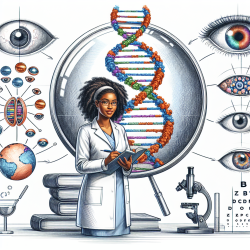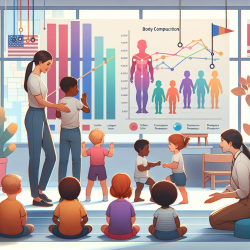Introduction
As a Special Education Director, ensuring that students receive the best possible educational experience is a top priority. One aspect of this involves understanding and addressing the unique needs of students with visual impairments, such as high myopia. Recent research titled "A new polygenic score for refractive error improves detection of children at risk of high myopia but not the prediction of those at risk of myopic macular degeneration" offers valuable insights into predicting high myopia in children using polygenic scores (PGS).
Understanding Polygenic Scores
Polygenic scores are a relatively new tool in genetic research, designed to quantify an individual's genetic predisposition to certain traits or conditions. In the context of myopia, a PGS is derived from genome-wide association studies (GWAS) and can help predict the likelihood of developing high myopia, particularly in children of European ancestry. This research indicates that the PGS explains 19% of the variance in refractive error for Europeans, which is a significant step forward in predictive accuracy.
Implications for Practitioners
For practitioners working in educational settings, the implications of this research are substantial. Here are some ways to implement these findings:
- Early Identification: Utilize PGS to identify children at risk of developing high myopia early in their educational journey. Early identification can lead to timely interventions that may slow the progression of myopia.
- Customized Interventions: Develop tailored educational and therapeutic interventions for students identified as high risk, potentially incorporating lifestyle modifications such as increased outdoor activities.
- Collaboration with Healthcare Providers: Work closely with ophthalmologists and other healthcare providers to monitor and manage the vision health of students, ensuring a comprehensive approach to their well-being.
Encouraging Further Research
While the PGS shows promise, it is not yet predictive of myopic macular degeneration (MMD) once refractive error is accounted for. This highlights the need for continued research to improve the predictive power of PGS across diverse ancestries and to explore its potential in predicting MMD independently of refractive error.
Practitioners are encouraged to stay informed about ongoing research in this area. Attending conferences, participating in webinars, and engaging with academic publications can provide valuable insights and keep practitioners at the forefront of educational strategies for students with visual impairments.
Conclusion
Integrating the outcomes of this research into educational practices can significantly enhance the support provided to students at risk of high myopia. By leveraging genetic insights, educators and healthcare providers can work together to improve the quality of life and educational outcomes for these students.
To read the original research paper, please follow this link: A new polygenic score for refractive error improves detection of children at risk of high myopia but not the prediction of those at risk of myopic macular degeneration.










